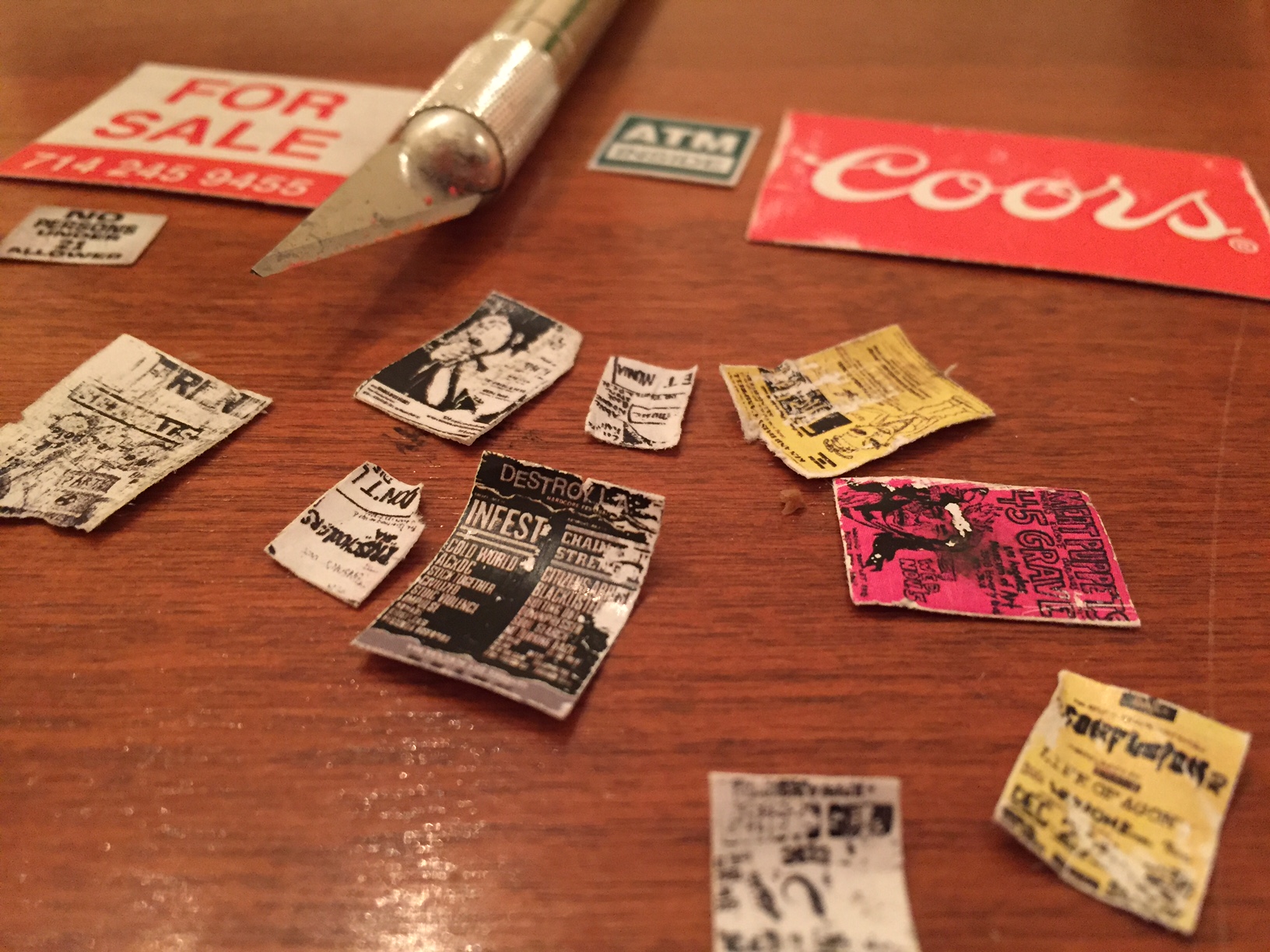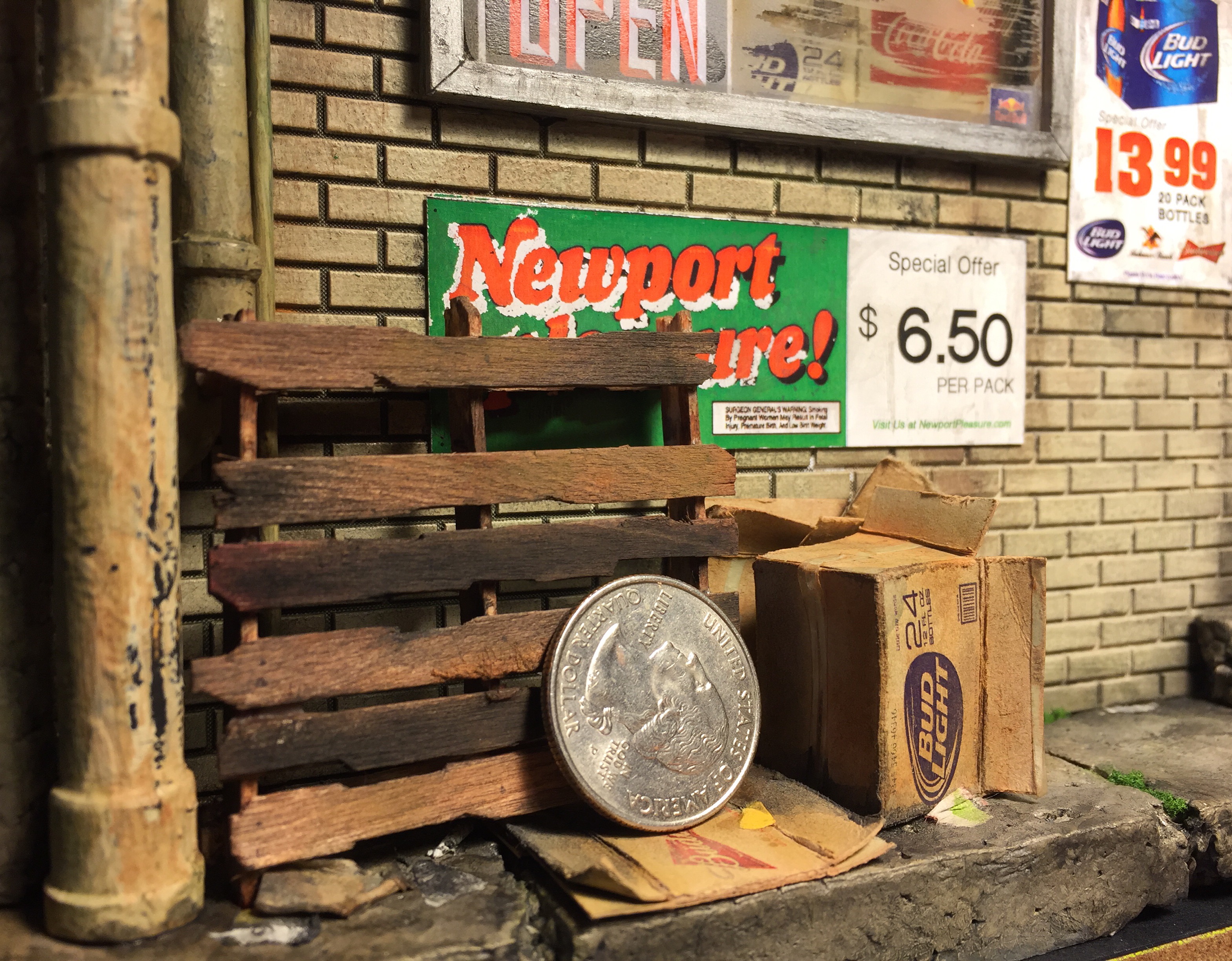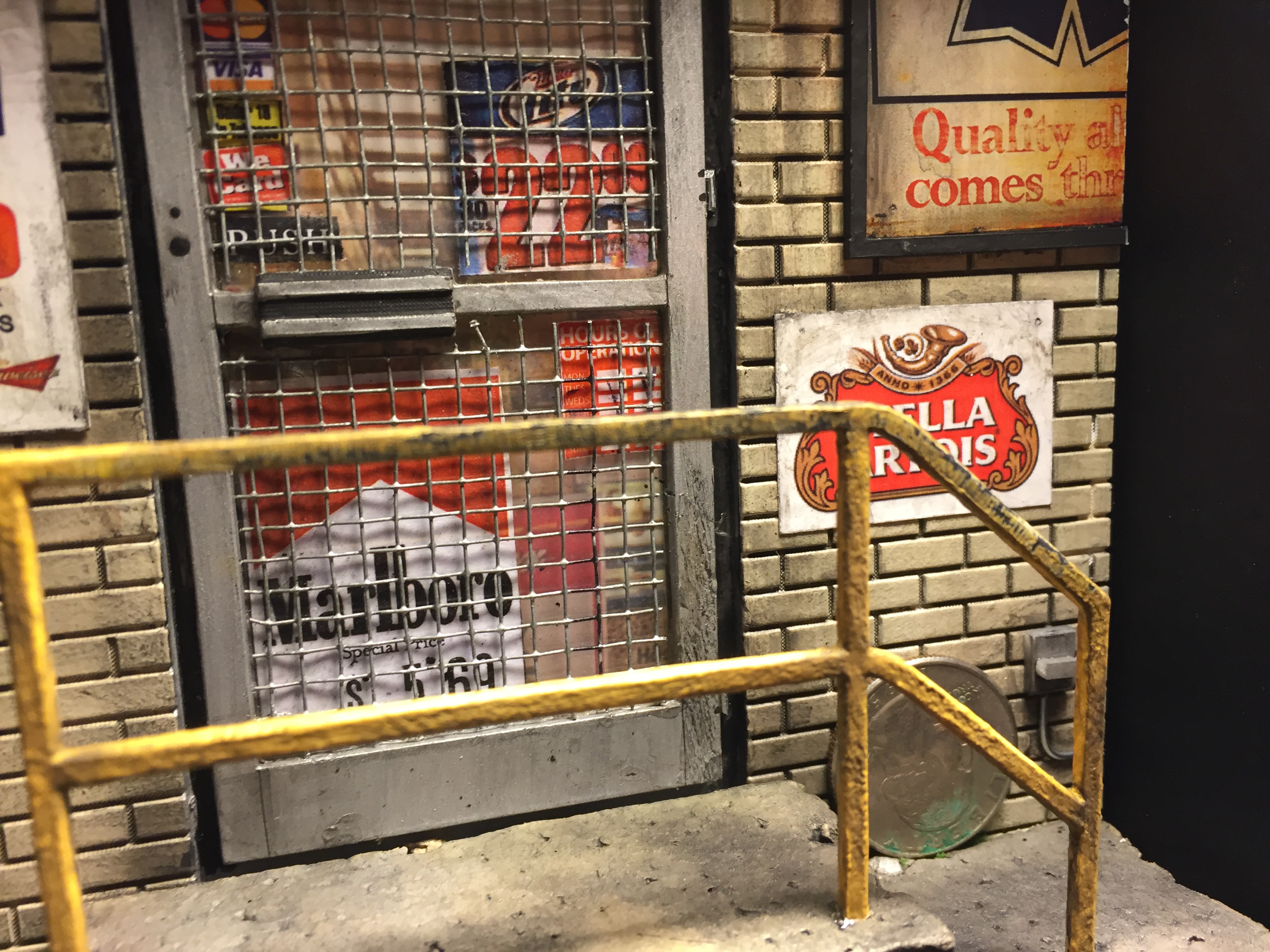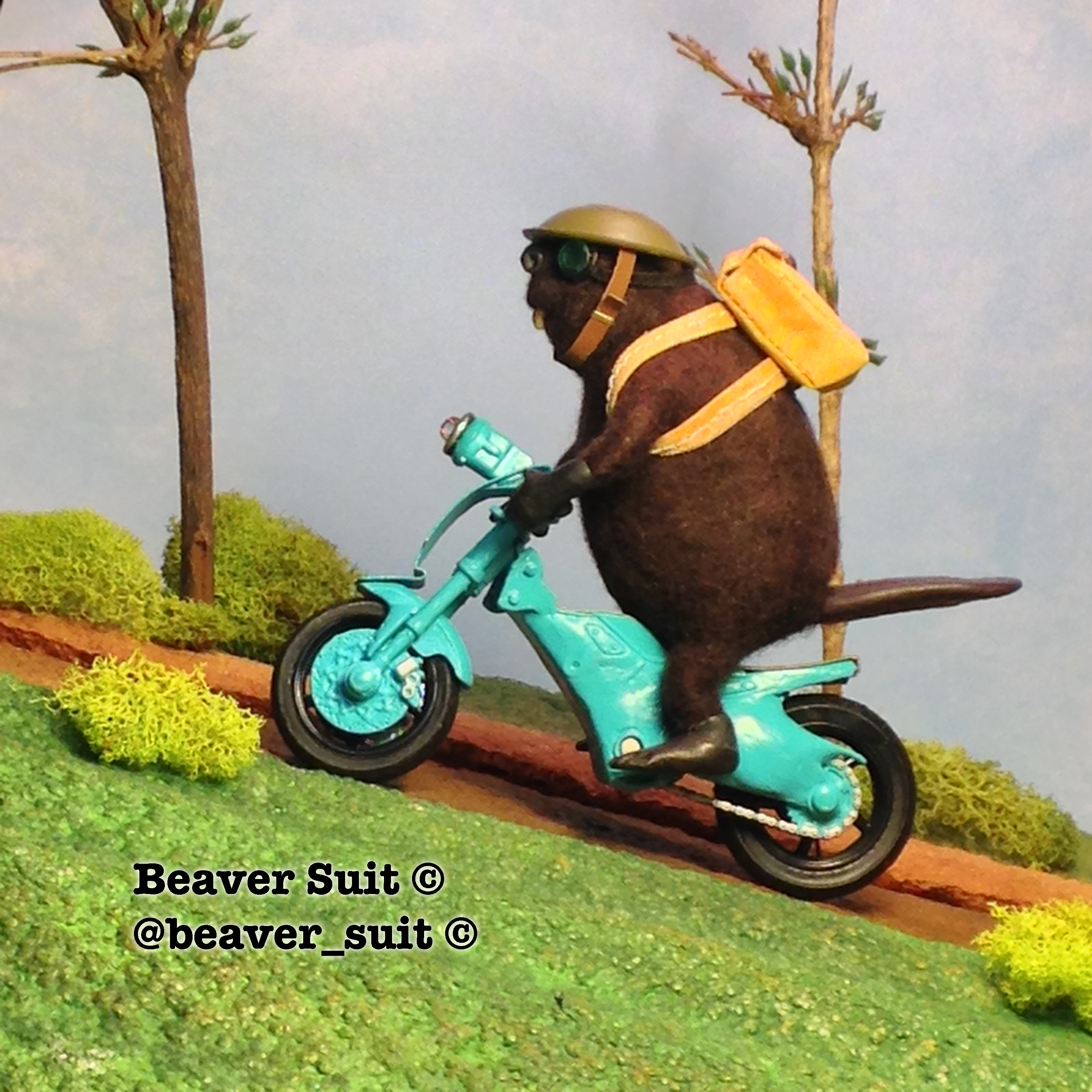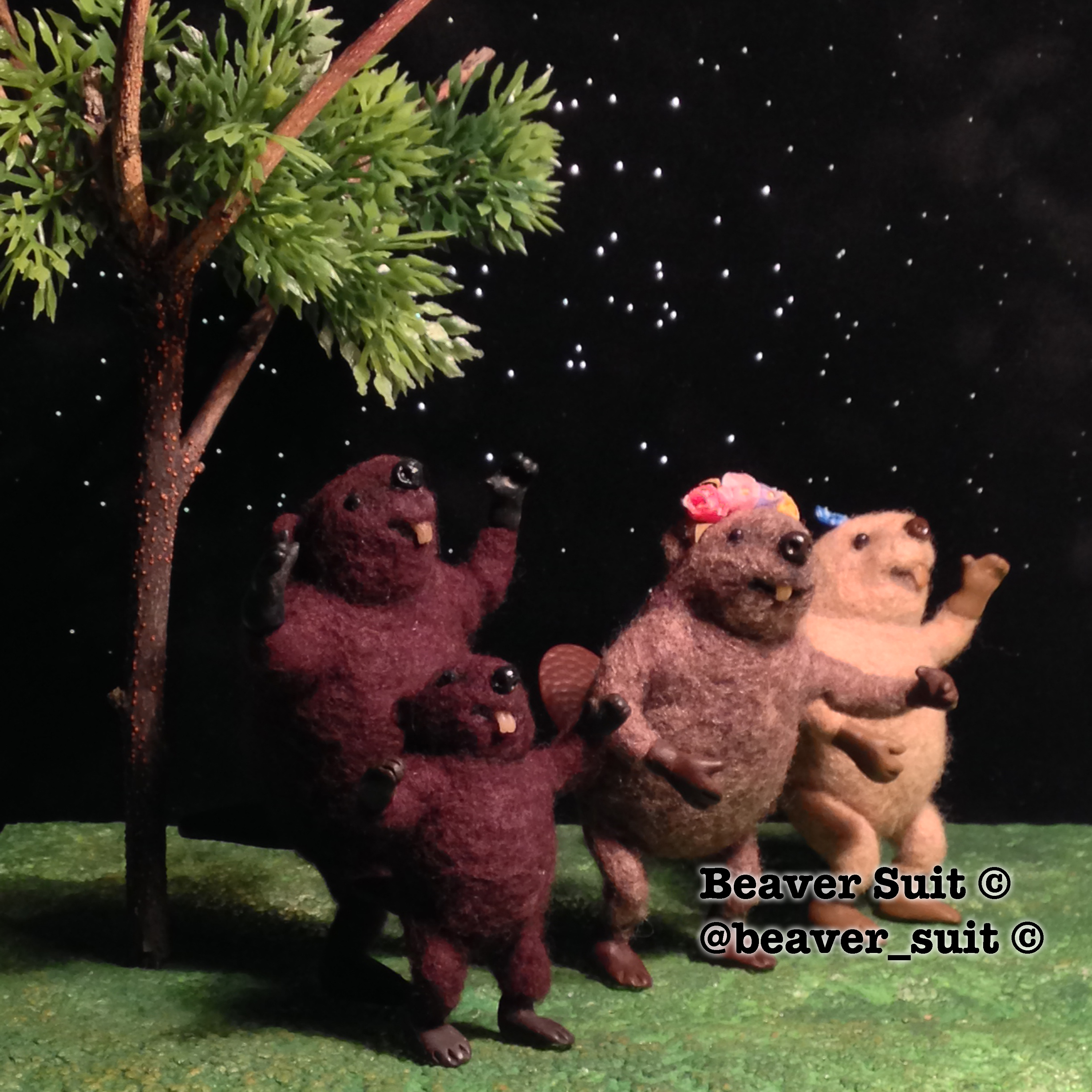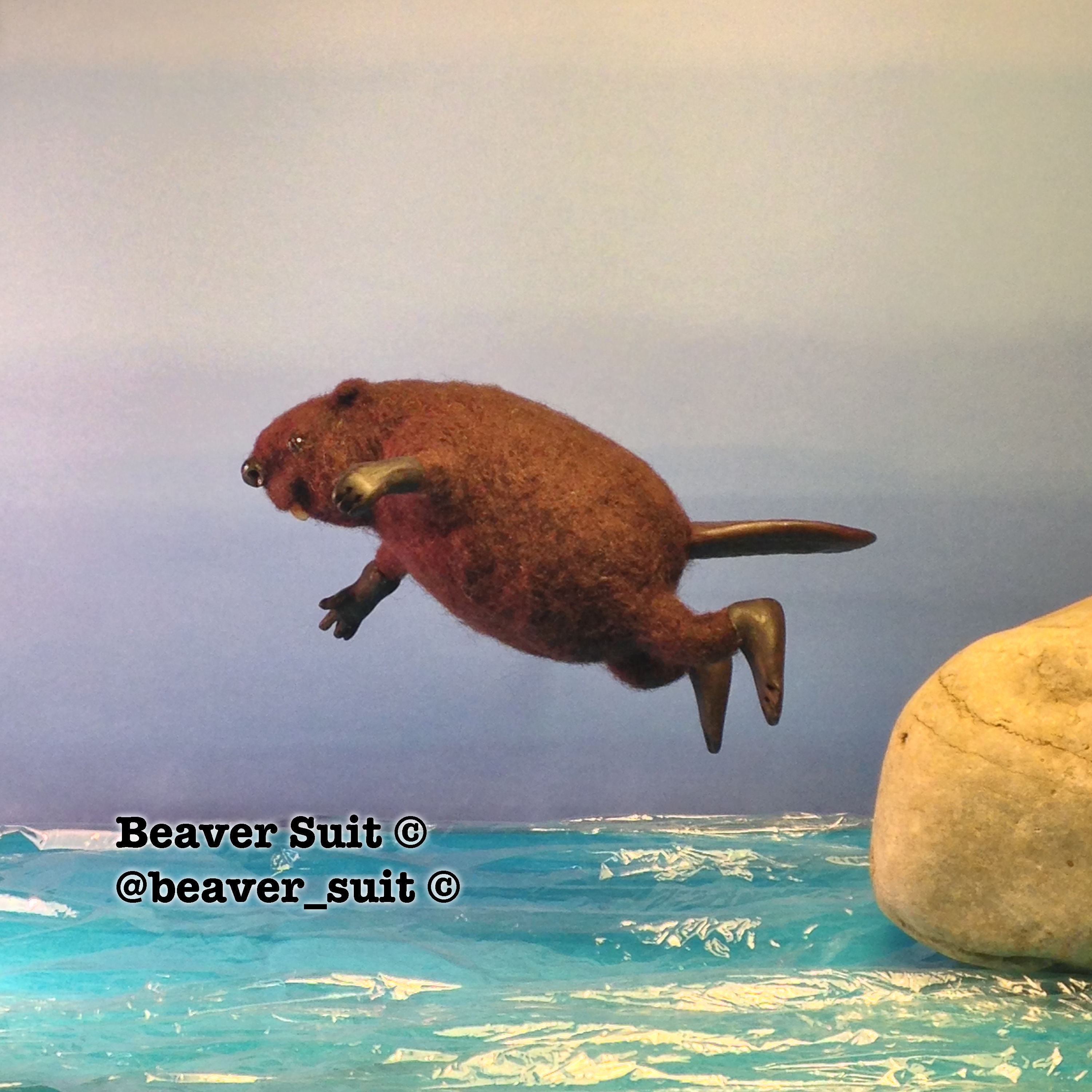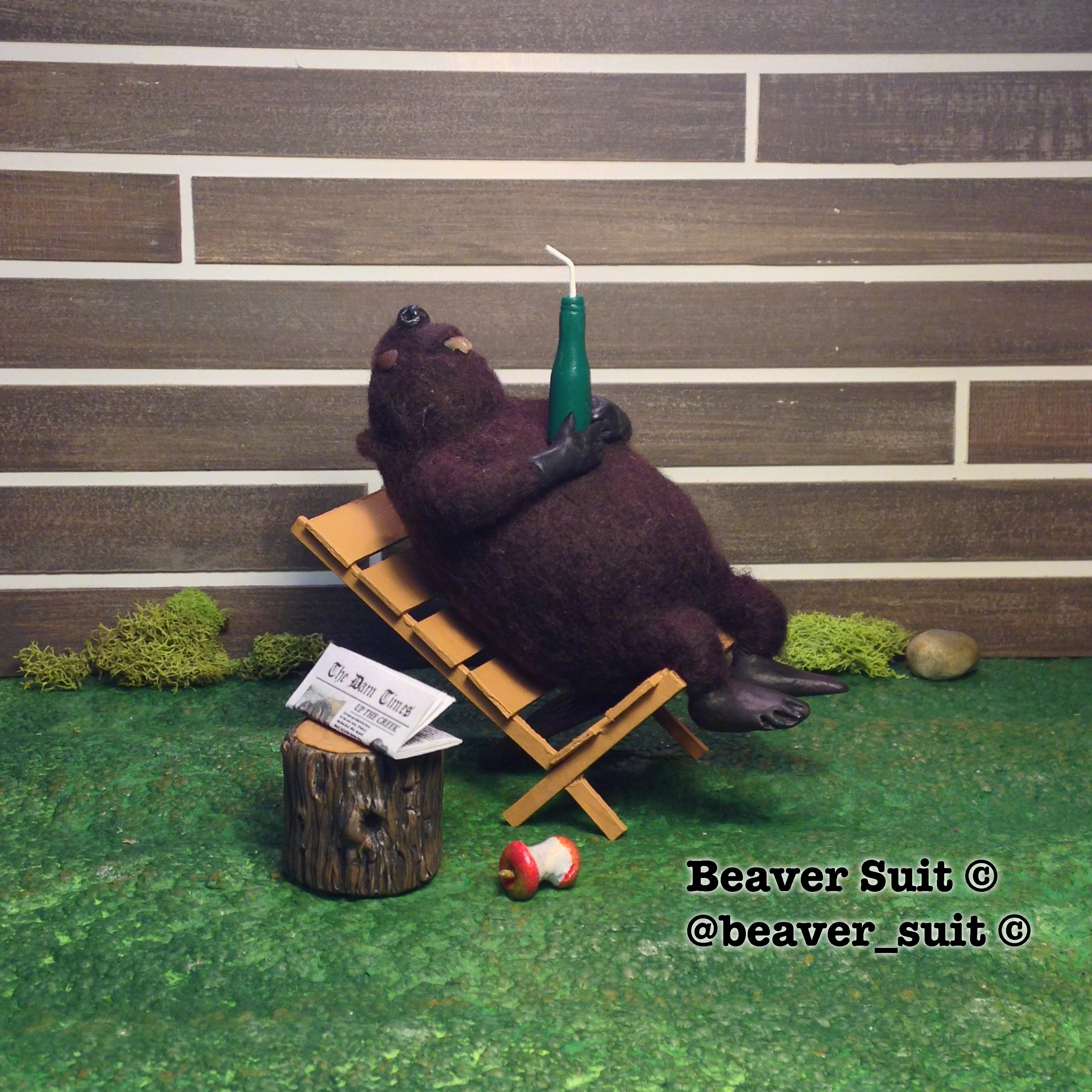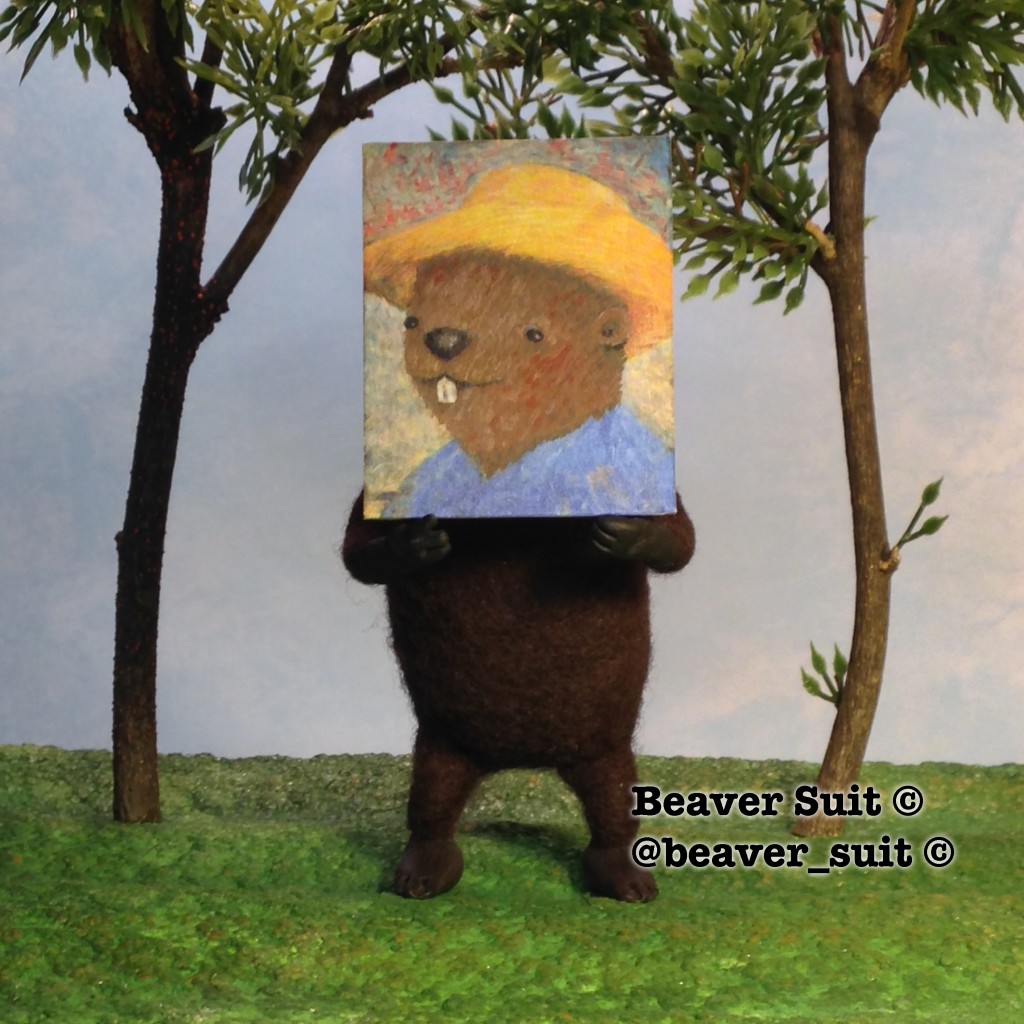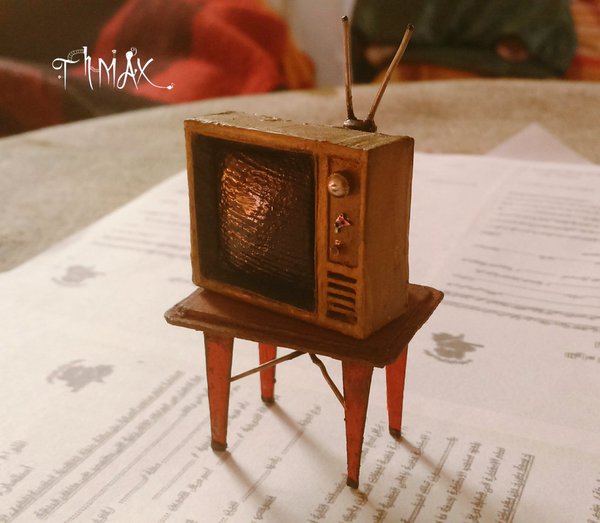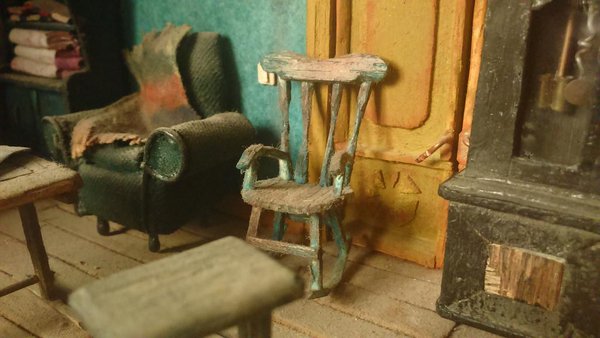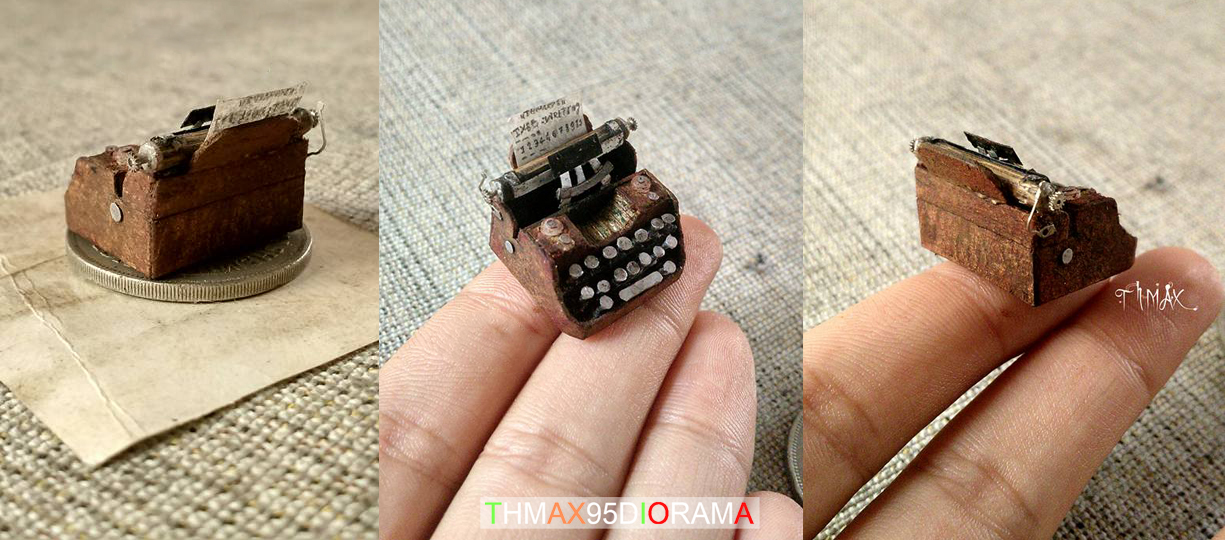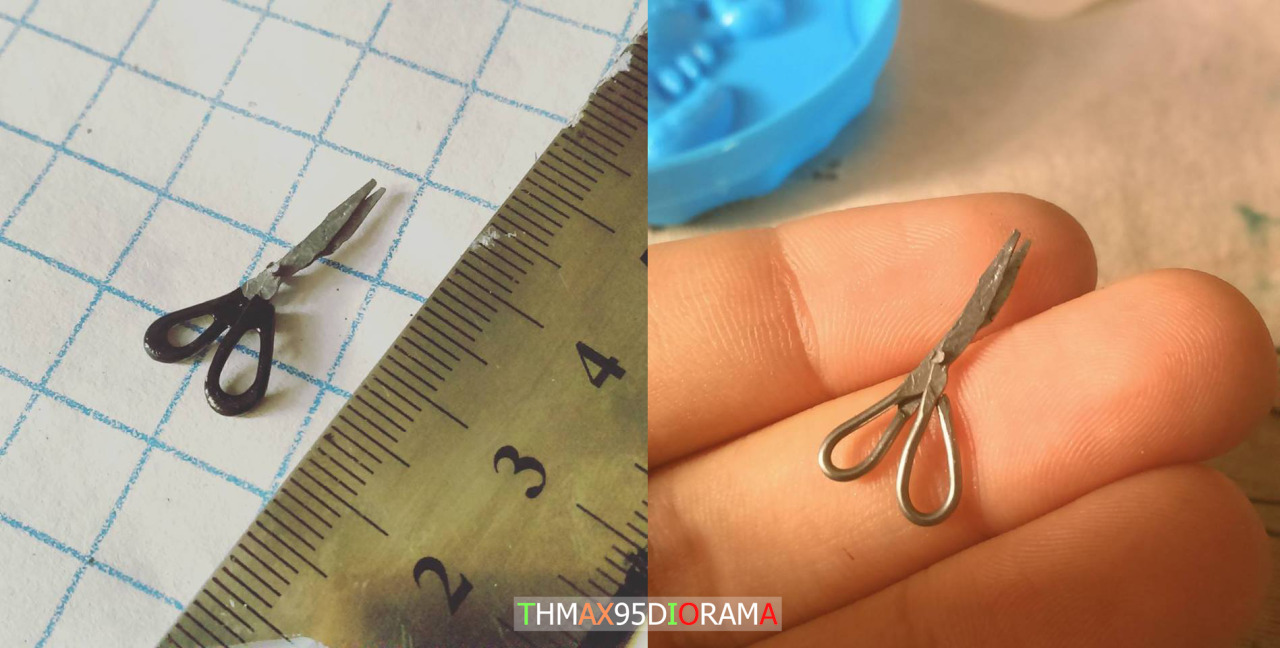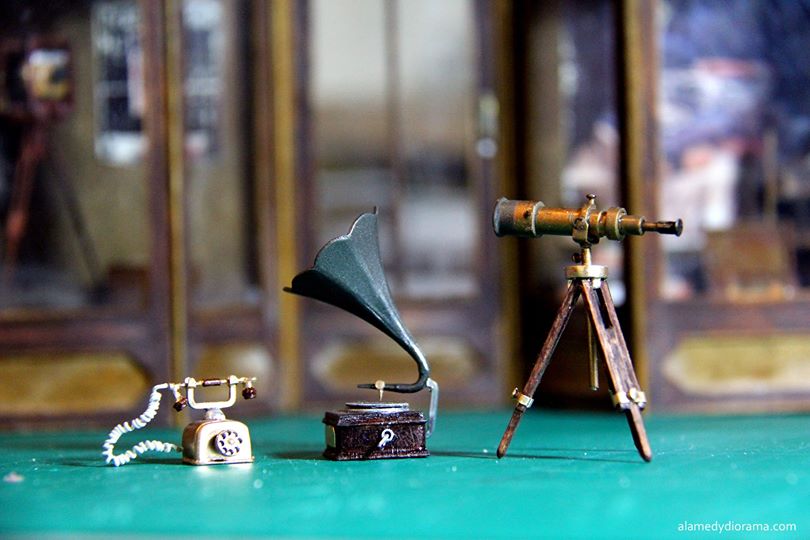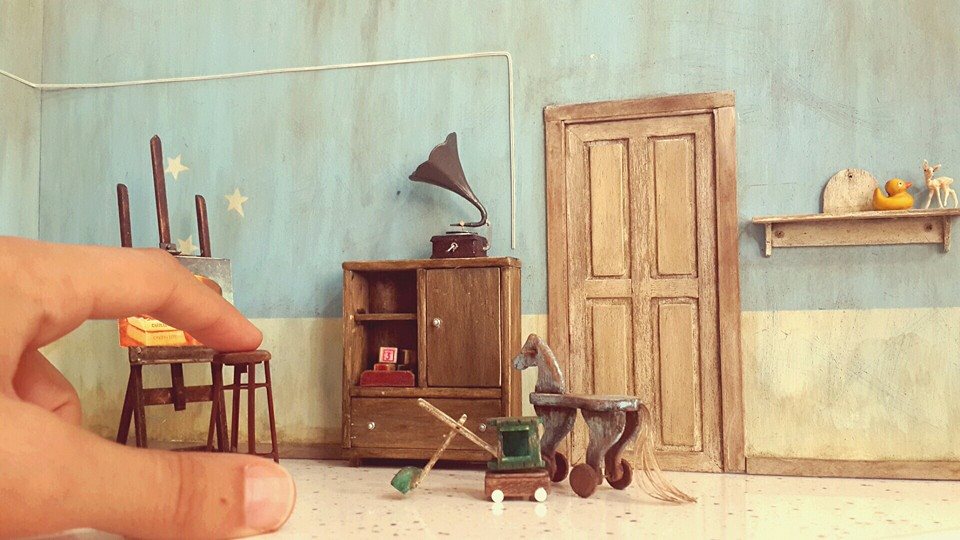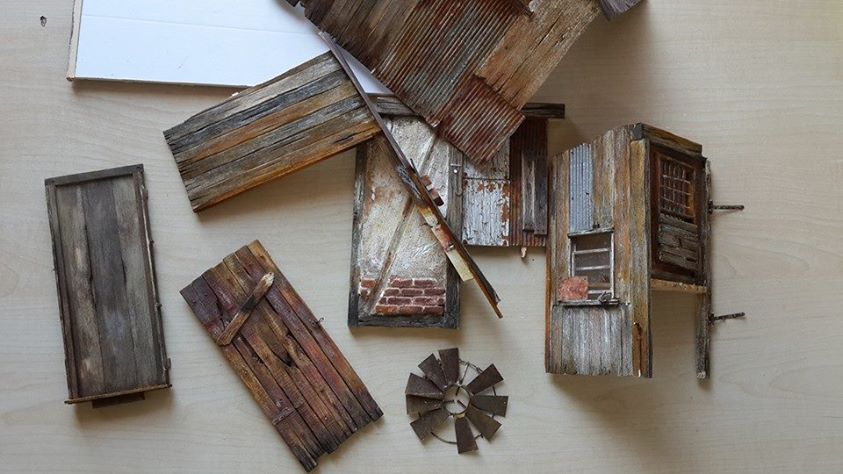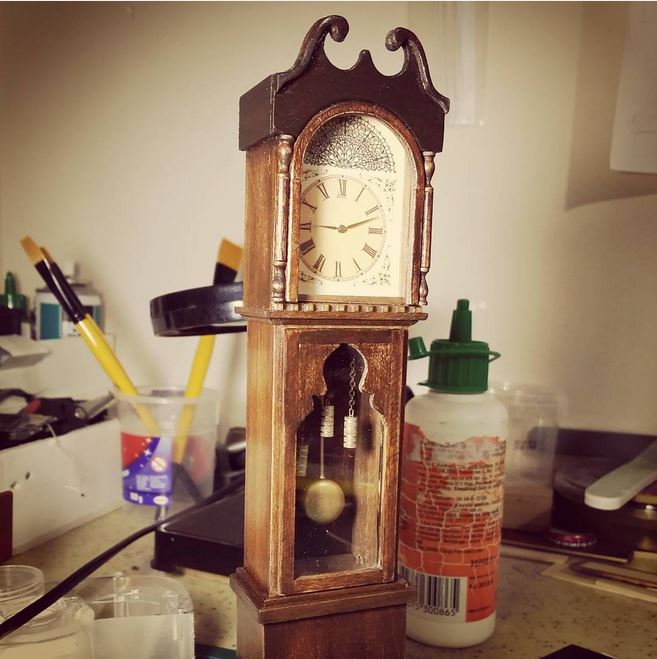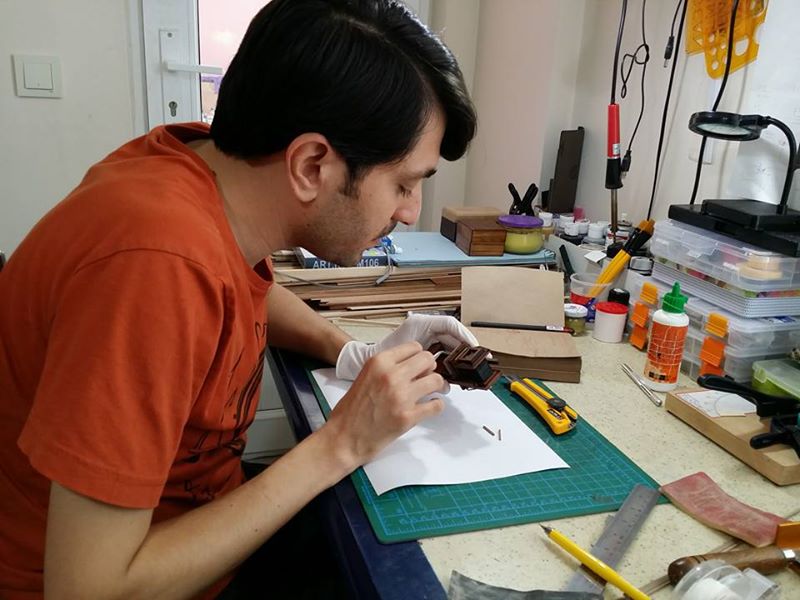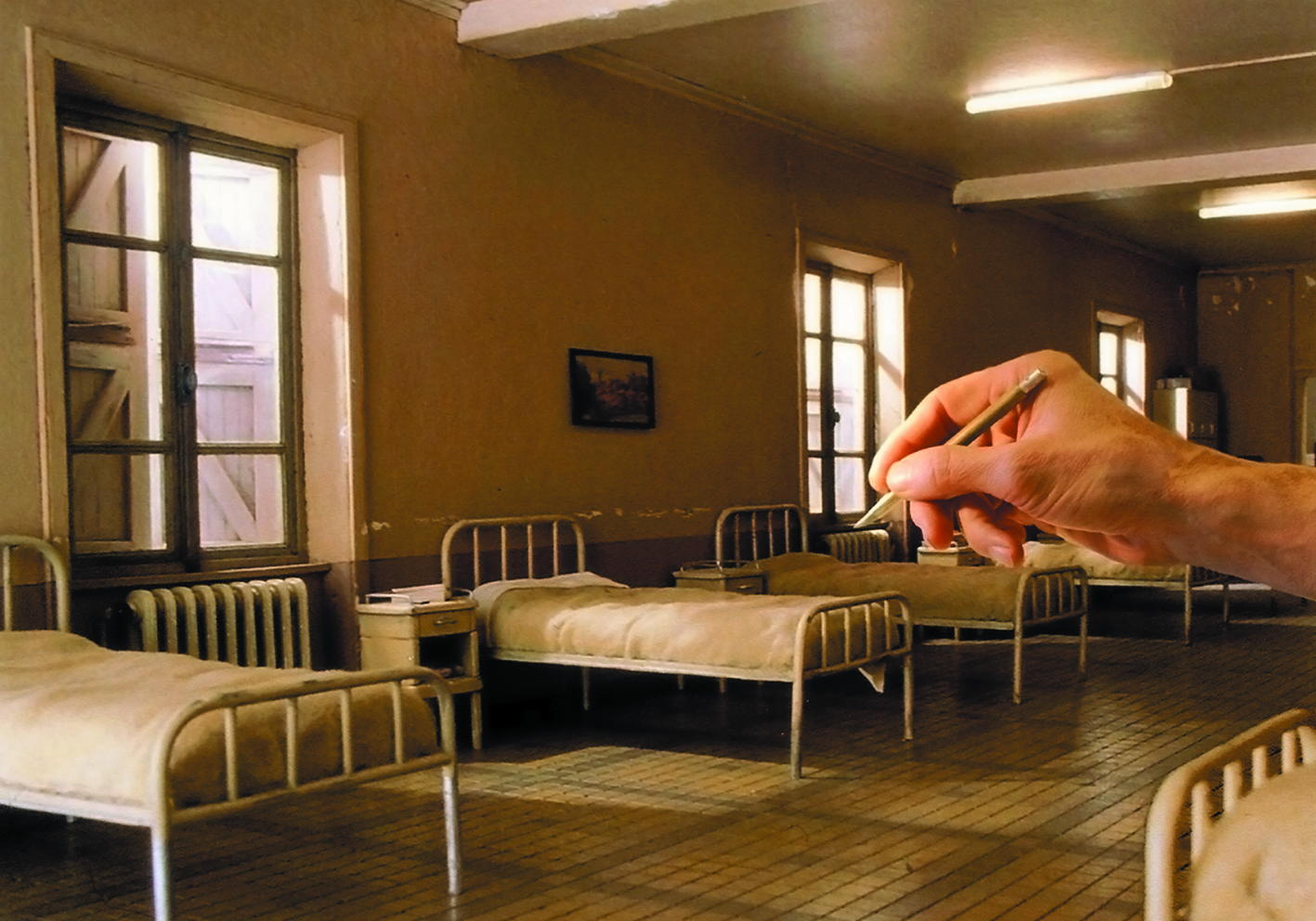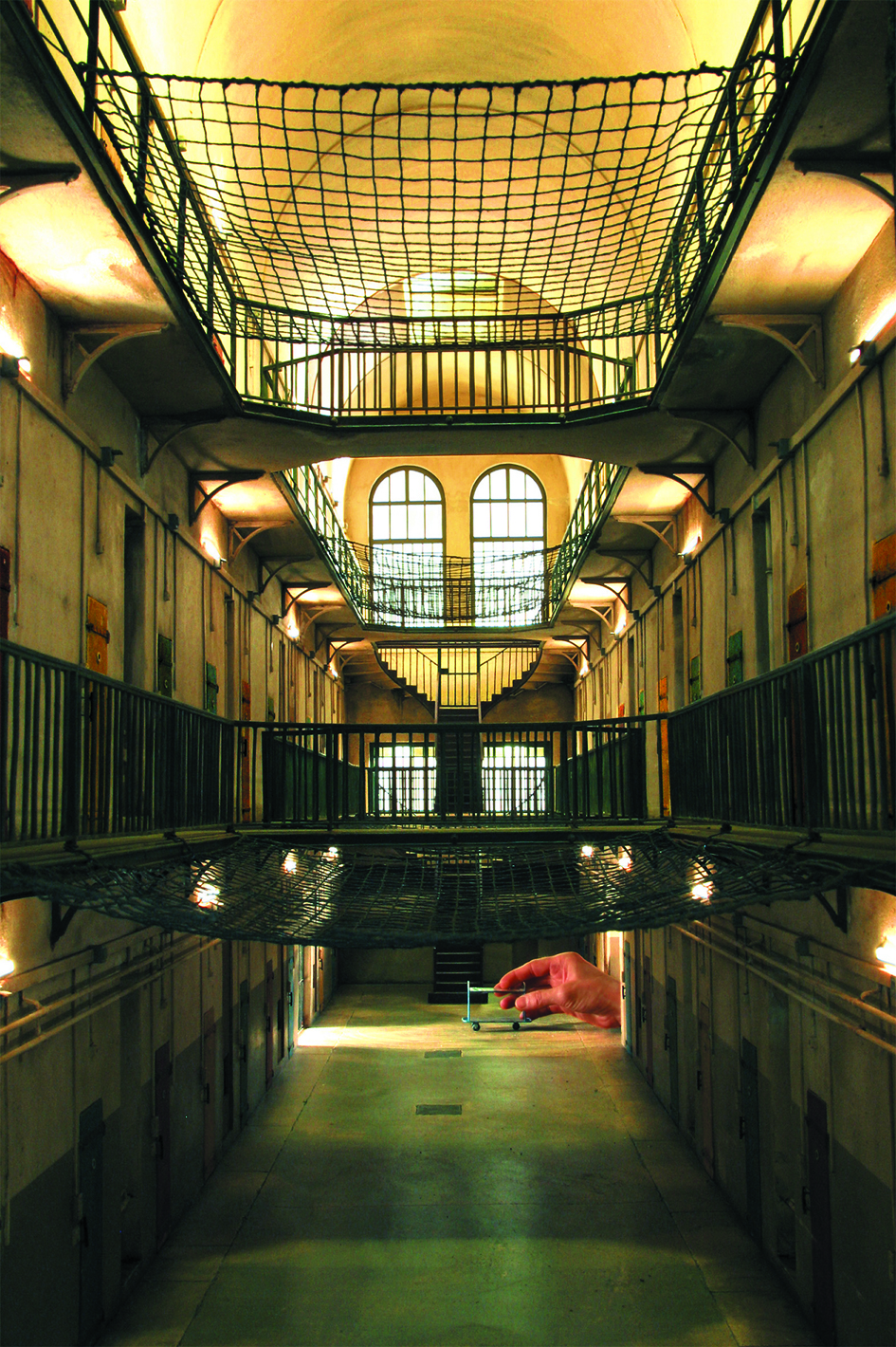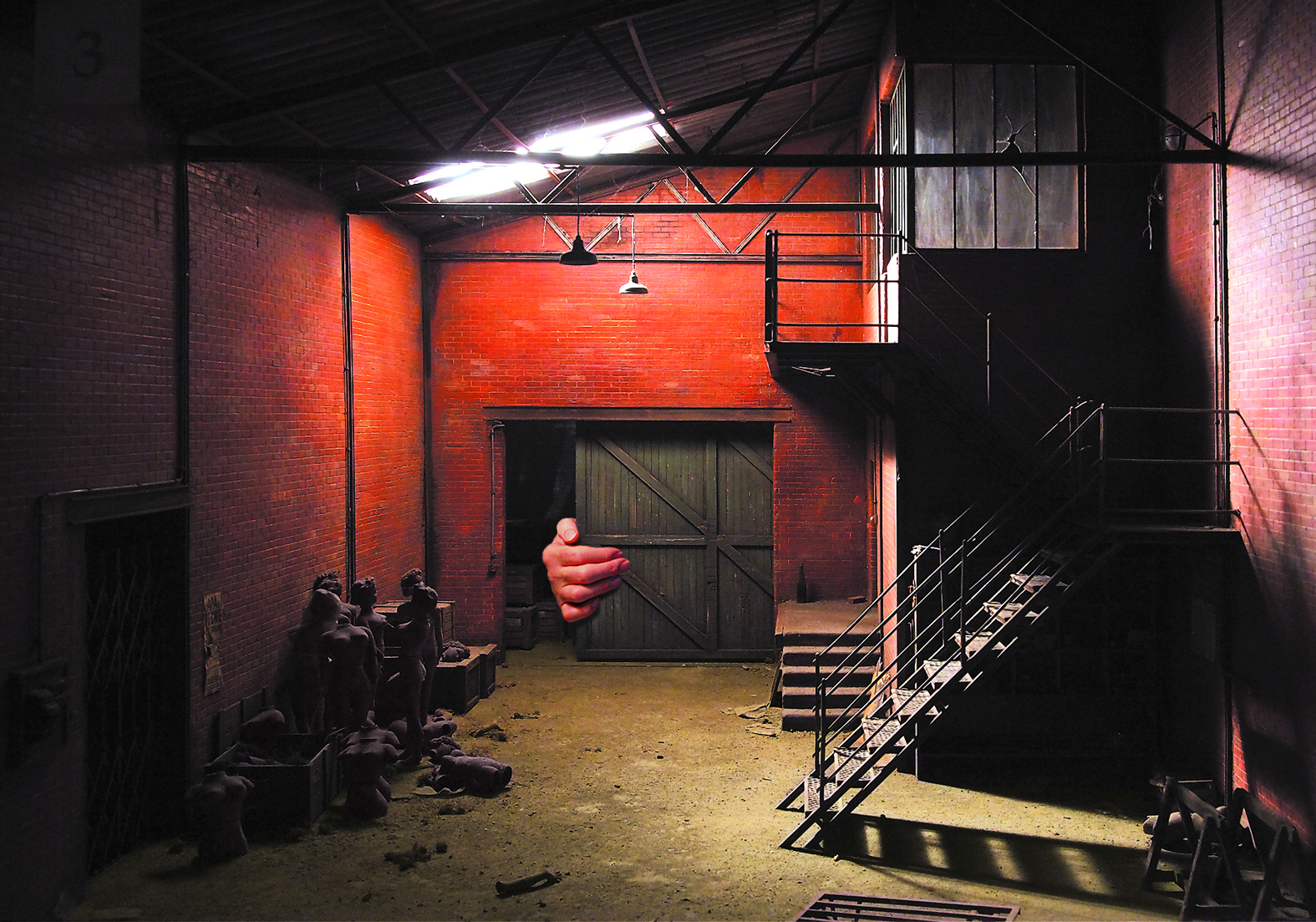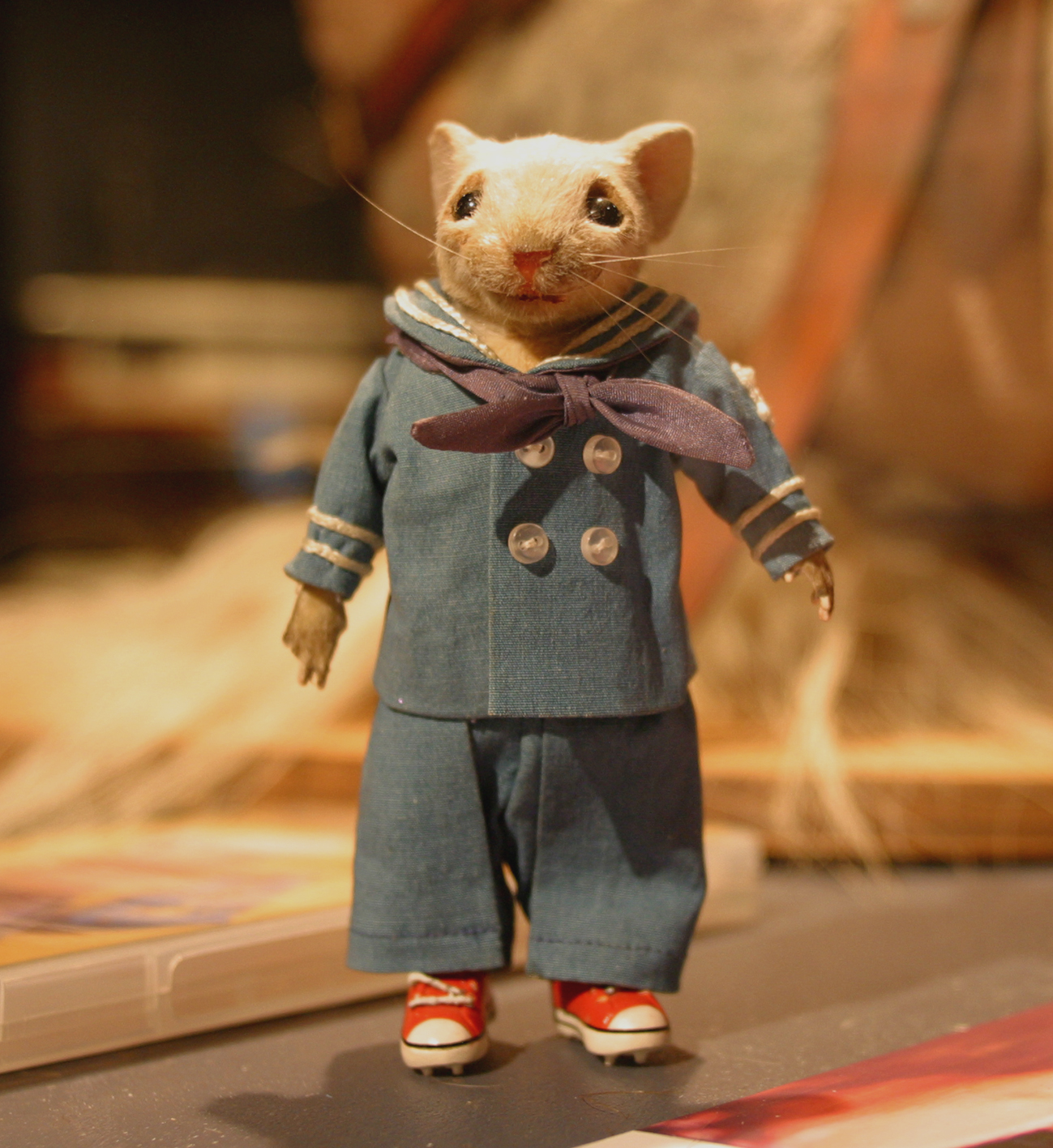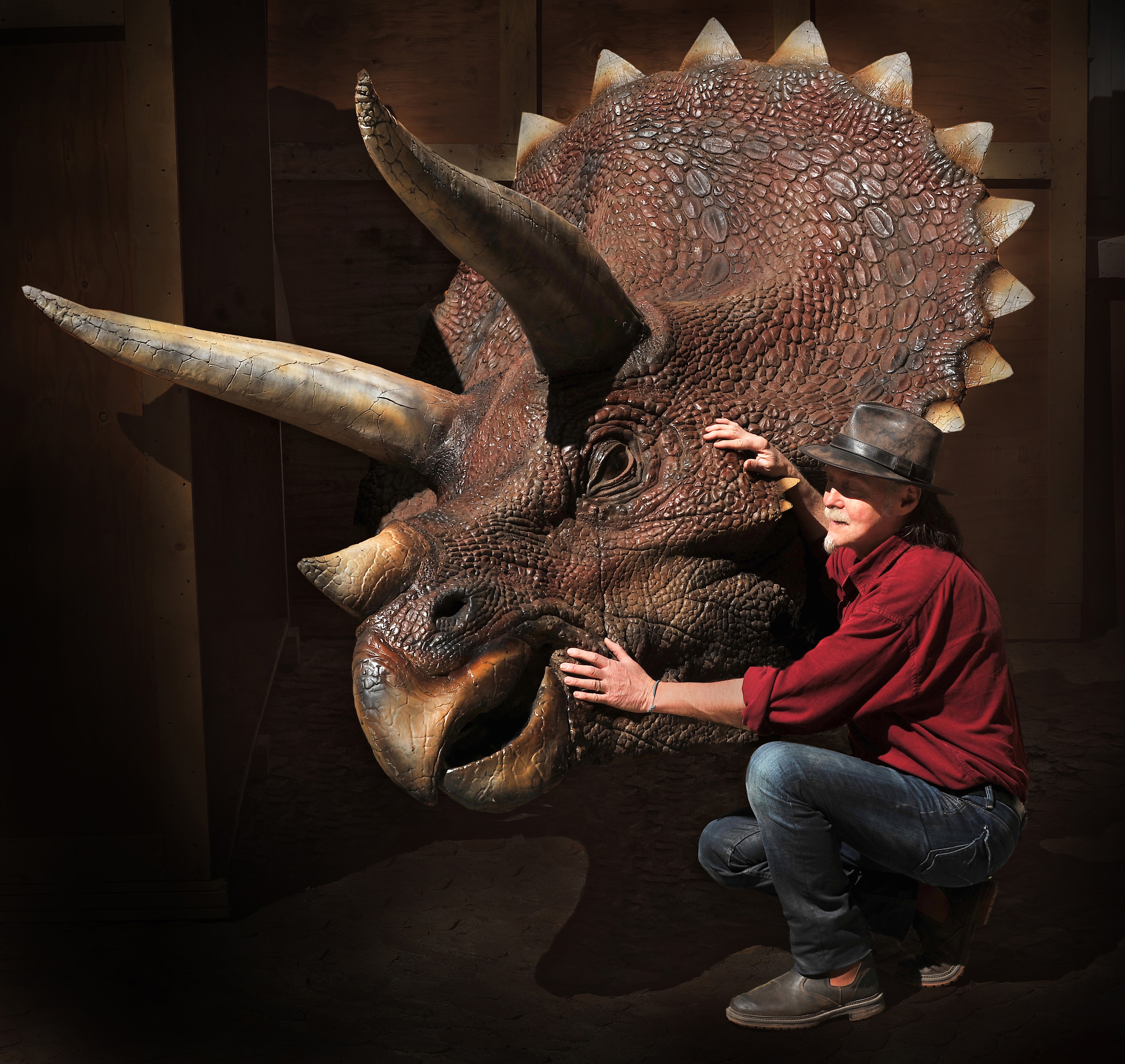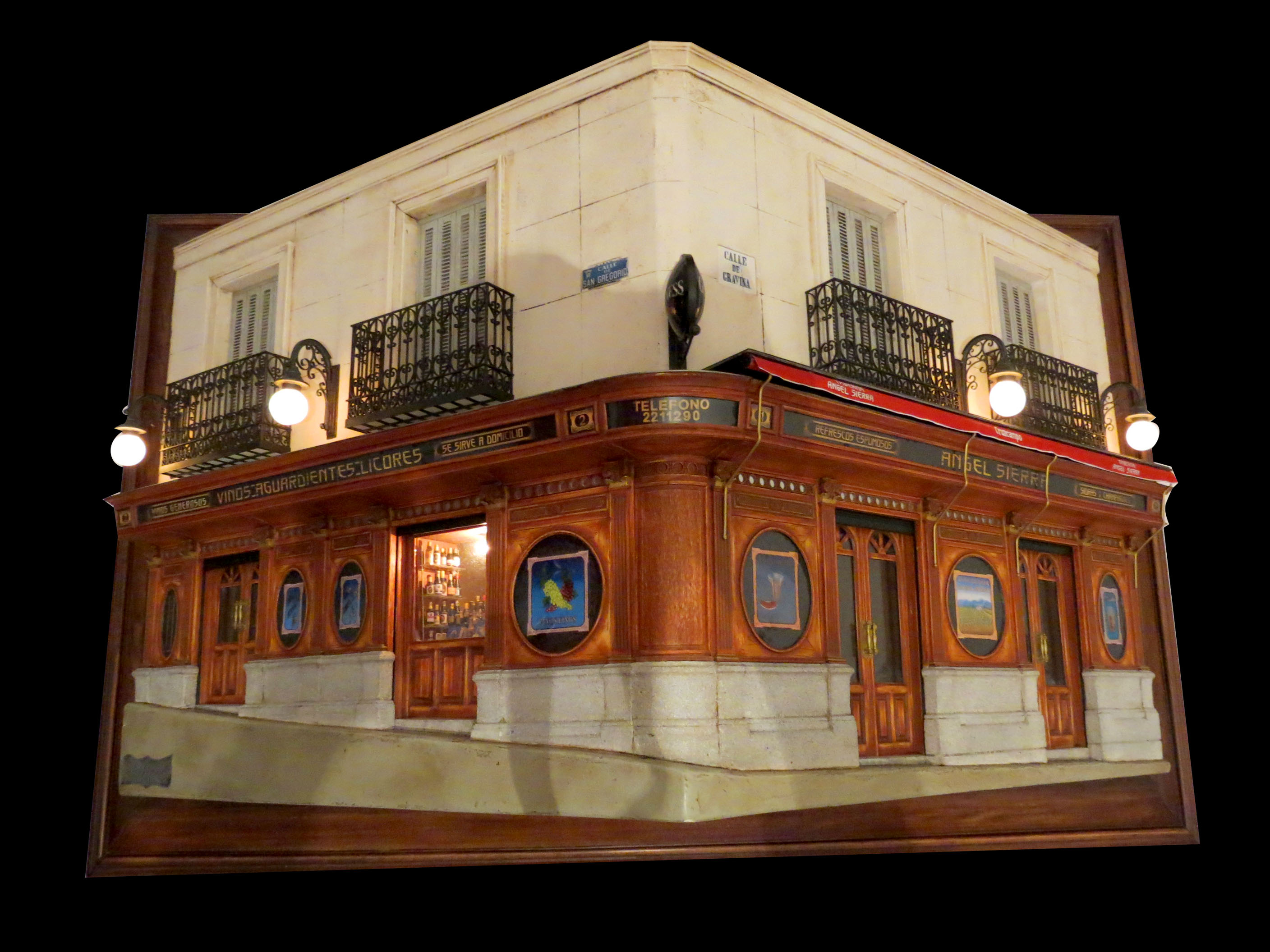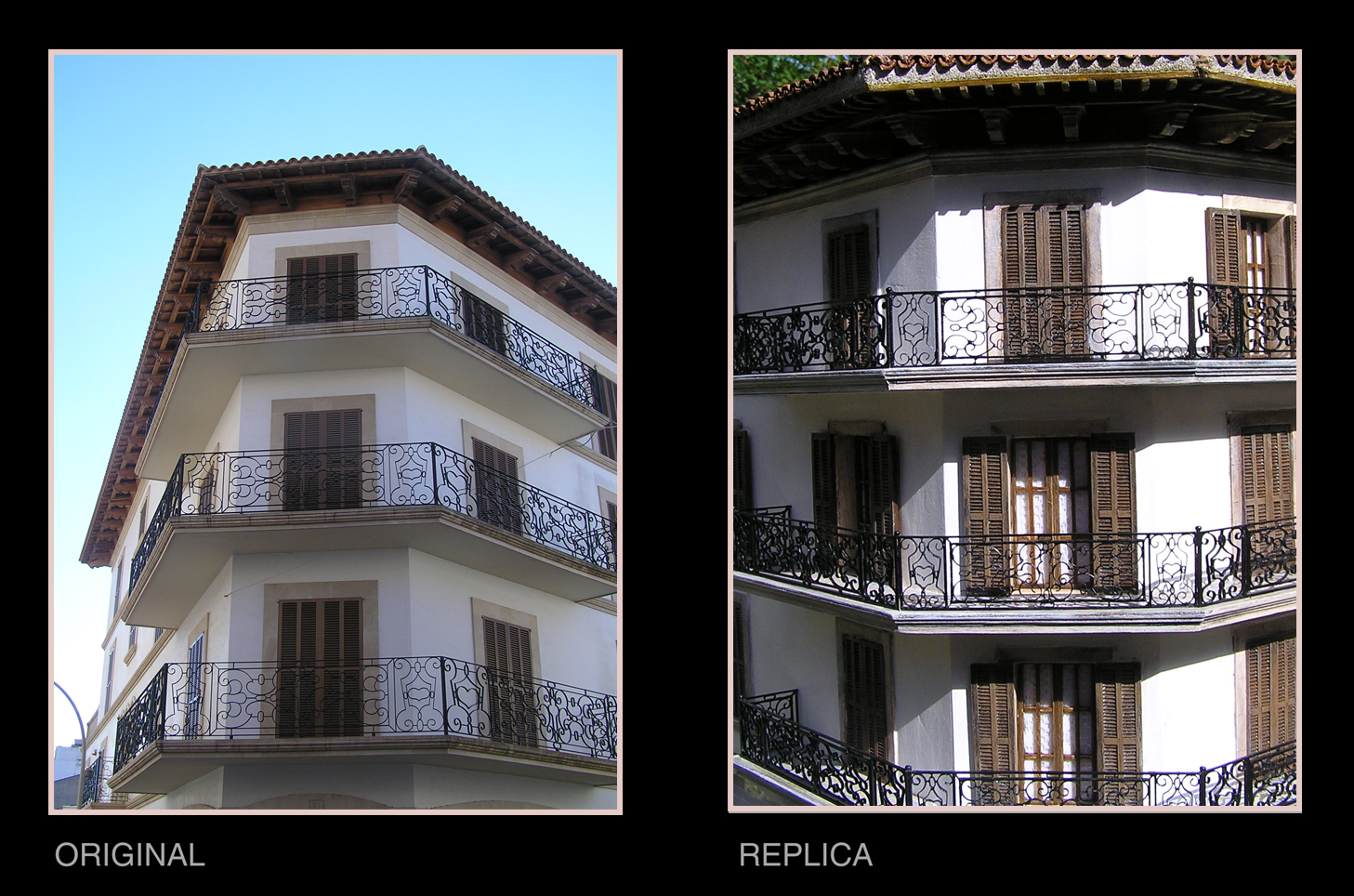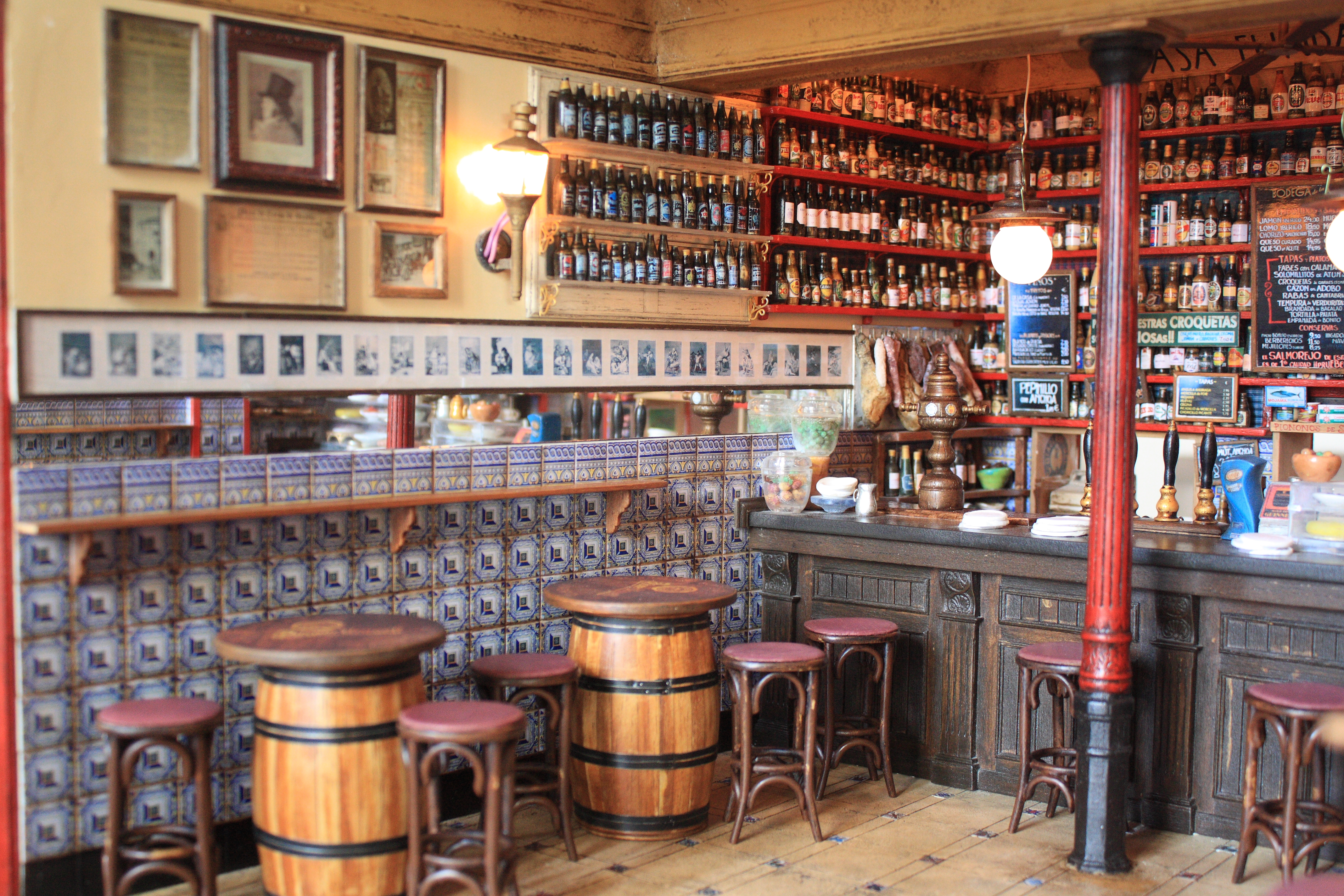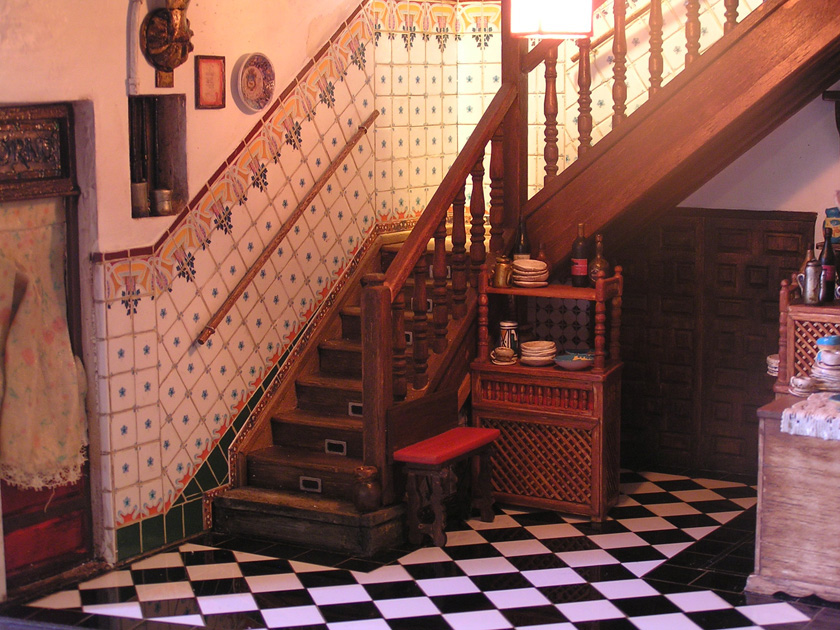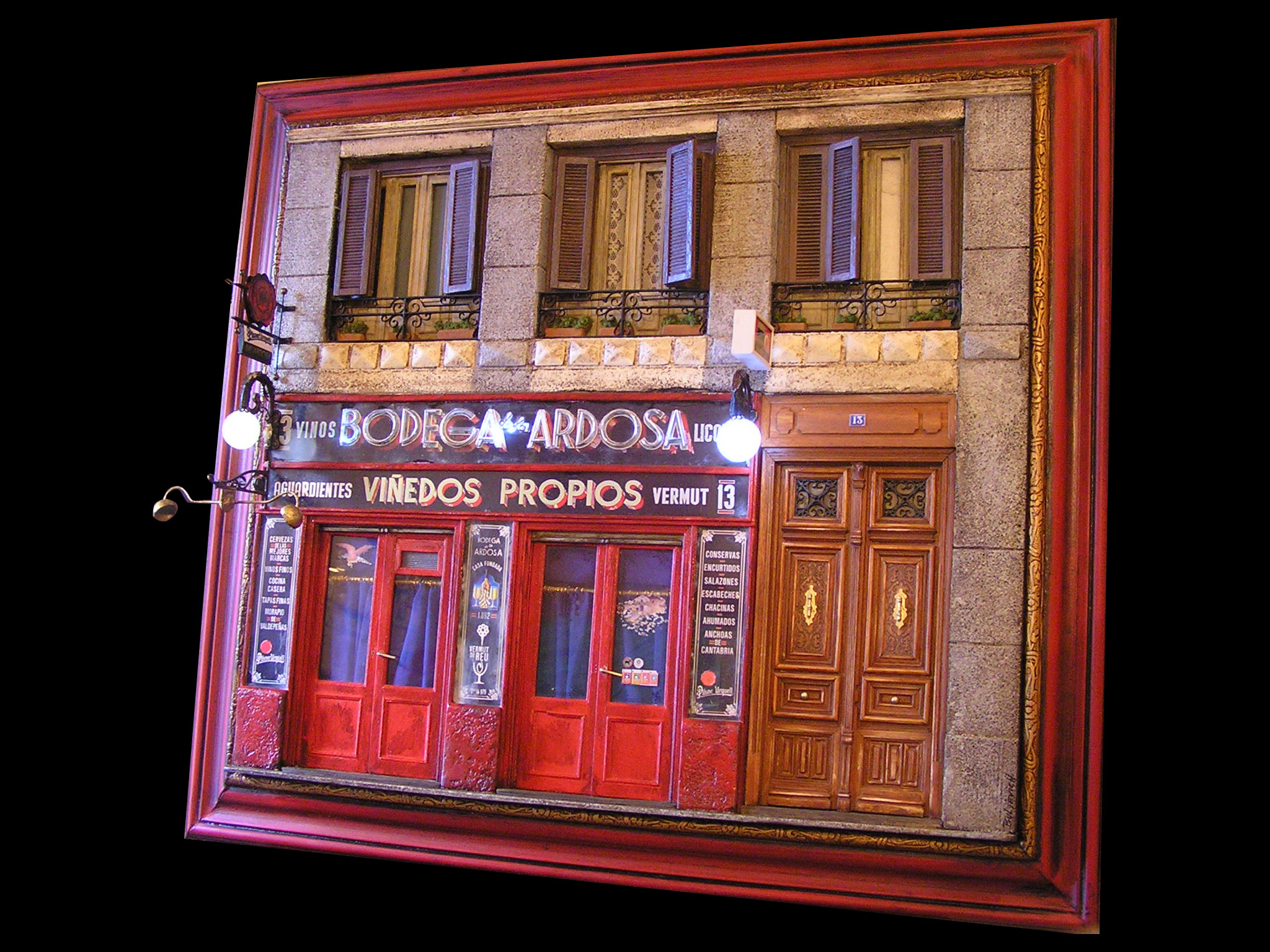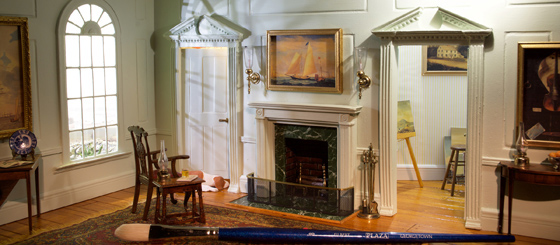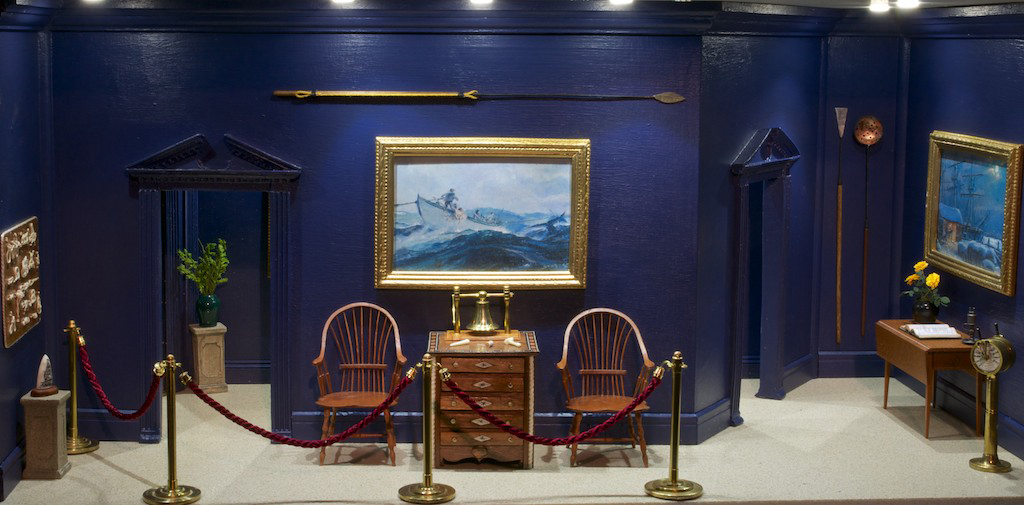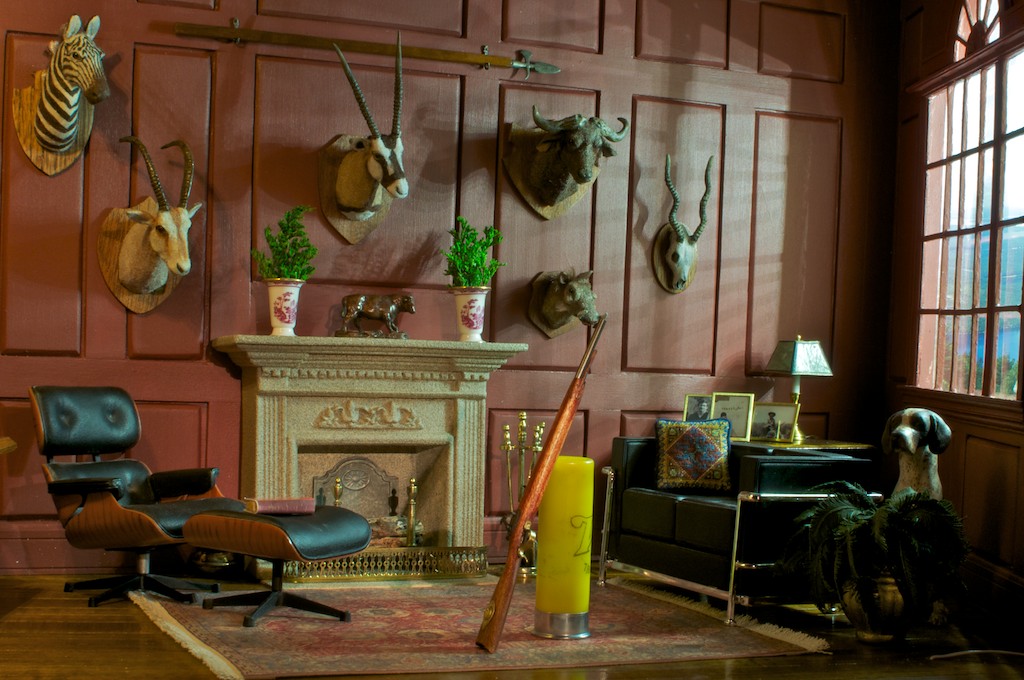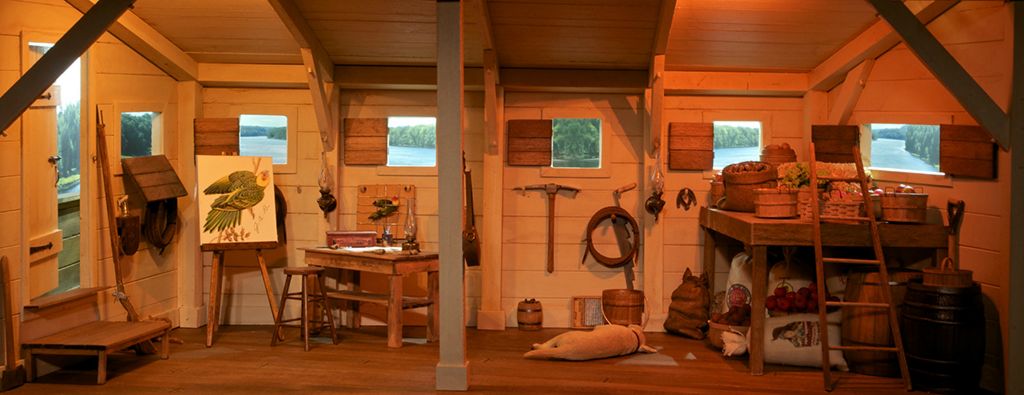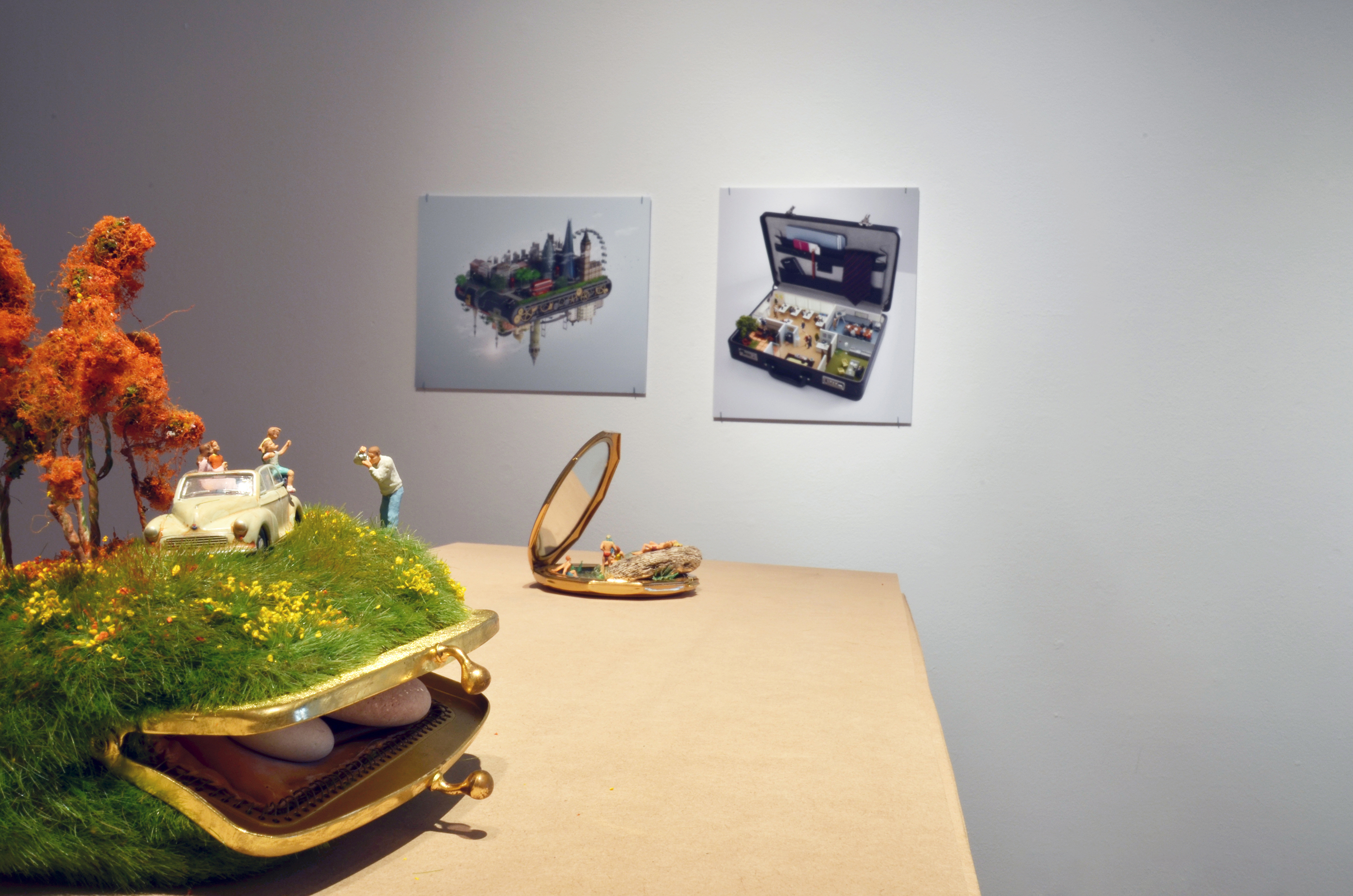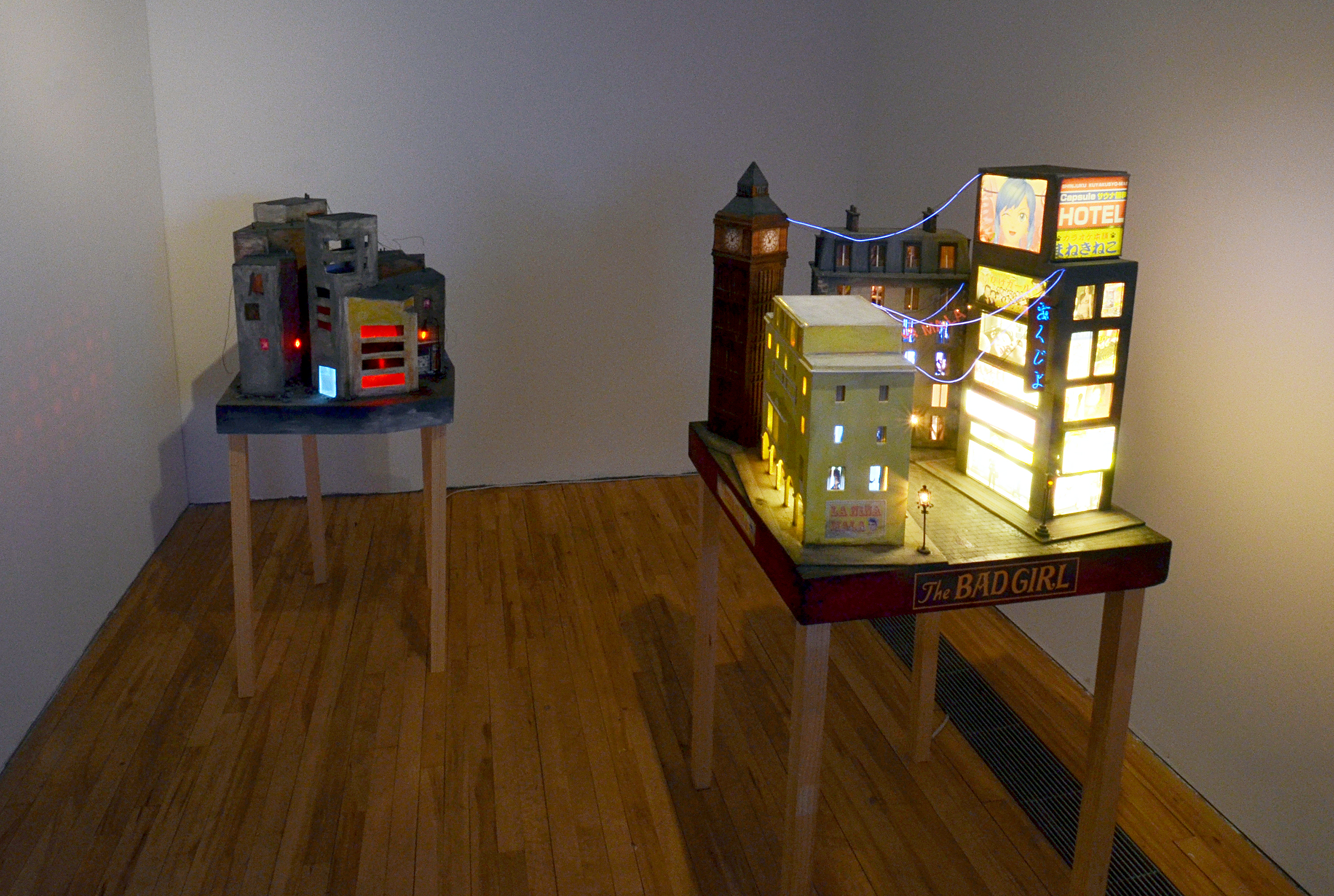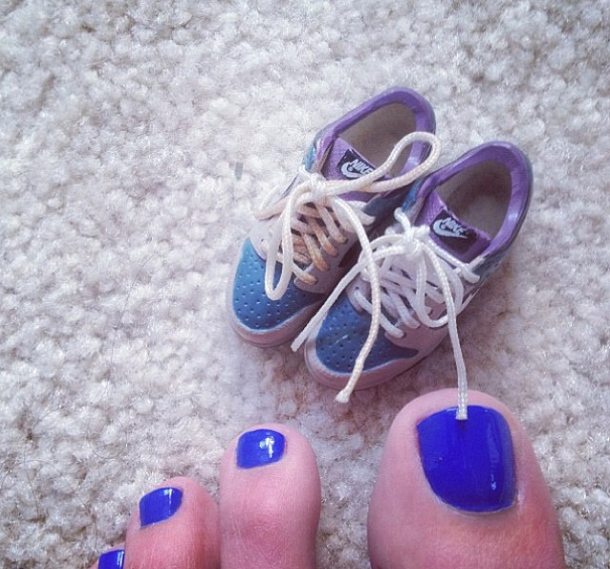Miniature Scenes and More by Ryan Monahan
 What’s your earliest memory with miniatures?
What’s your earliest memory with miniatures?
Honestly, I think the earliest memory I have is visiting a family friend’s house where they had a scale model of their home. It blew my little mind; I recall running around checking if they included all the details like the garden hose or the house number… I really was fascinated. I had to be about 8 or 9 years old, I’m guessing.
How did you first get started making miniatures yourself?
I really kind of fell into making miniatures. I’ve been a fine artist most of my life doing everything from pencil to paint on paper and what not, but was growing bored with the same 2-D art. Truth be told, I only made my first real miniature sculpture a few months ago. For me I think the interest partially stems from growing up such a toy freak, I used to make mini dioramas out of foam for my action figures and hotels for my Treasure Trolls.
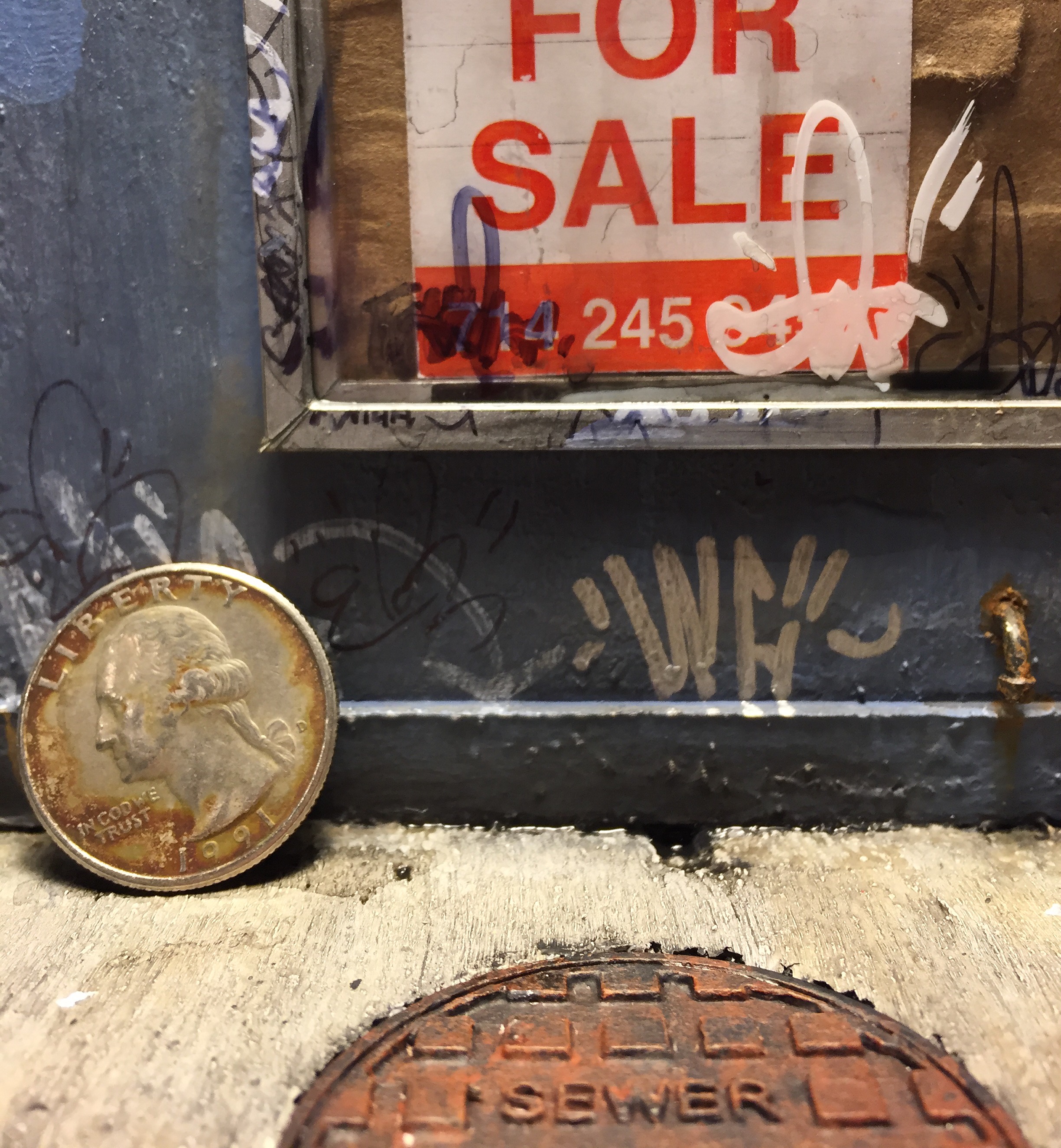 What miniature projects are you currently working on?
What miniature projects are you currently working on?
I’m currently working on my third piece in a new series I’m putting together of different seedy storefronts that have some weird connection to my past. My current project is a bar next to a tattoo shop in a less than friendly neighborhood, let’s just say. The sculpture is based on my experiences, years ago, being a tattoo artist in Rochester, NY.
My technique is pretty all over the place, I use mostly found objects and repurposed items. By default, I have become a hoarder! I try to make everything myself including all the advertisements and signage; that was a nice way to incorporate my Graphic Design background.
Most of my building structures are made out of foam, chip board, plaster and plastic, then finished off with several layers of paint and weathering techniques.
What cities have you created miniature replicas from? We saw a miniature building from Miami, Arizona.
Actually the church in Miami, AZ is the only replica of a building so far, the other projects have been fictitious locations that were created by me. I plan to do a few more local to Chicago locations though once I finish this current series.
What’s the most challenging aspect of your miniature making?
For me, it’s the overall composition of my pieces; I tend to want to crop my view point to give a little more interest for the viewer. I always like when things are thoughtfully cropped, as a viewer you look at it and it just feels right. Aside from that… padlocks, the size of a half grain of rice; I need better tweezers!
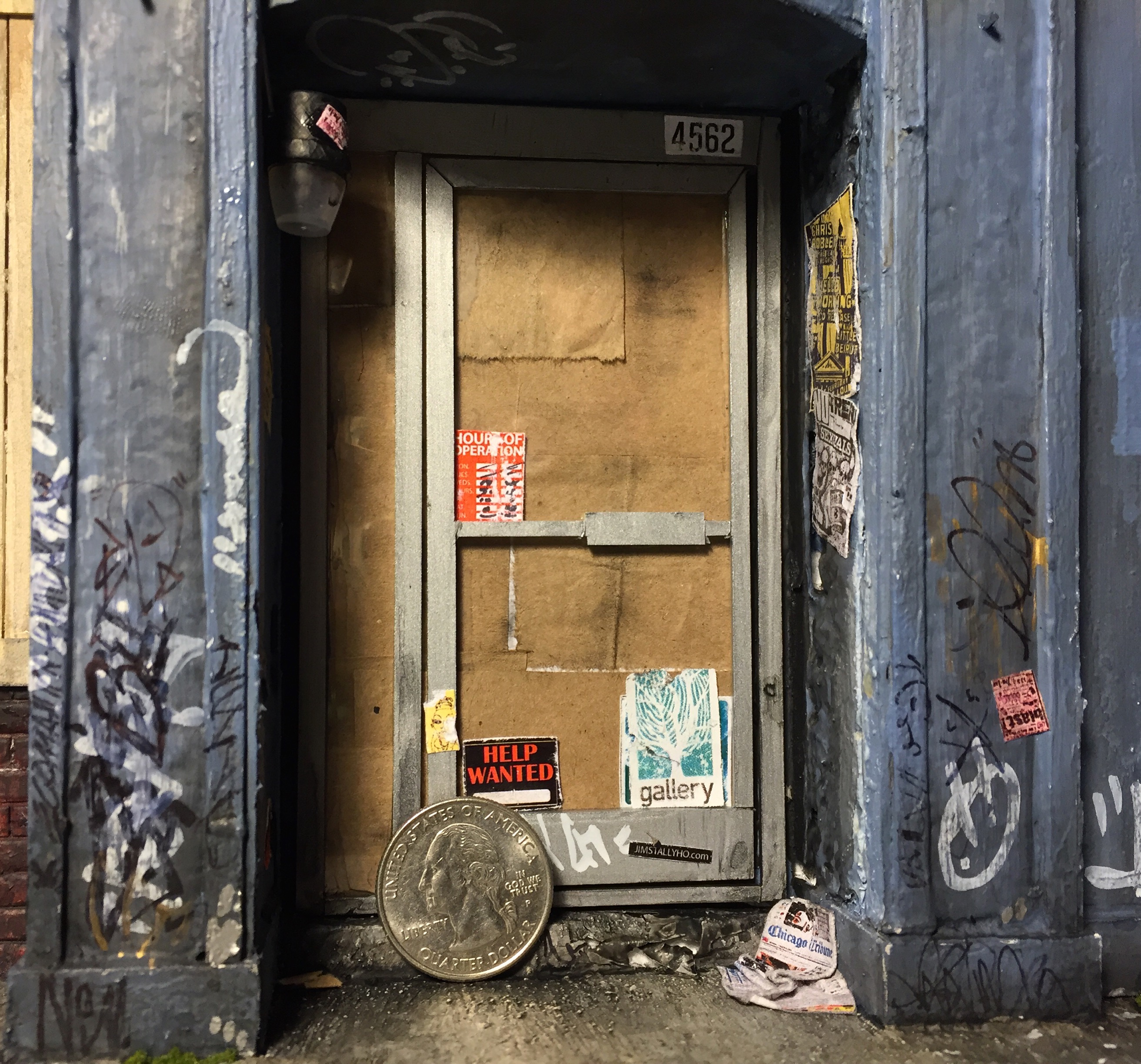 What advice would you give to new artists miniaturists?
What advice would you give to new artists miniaturists?
Well since I’m still getting started myself, I feel I’m constantly learning and looking at everything with a miniature eye. If I had to give advice to another person just like me, I would say, make what you see, not what you think you see. Really take the time to study the nitty-gritty, the stuff that everyone disregards at first glance, that is what you need to remember to include.
Favorite miniature prop you’ve made for one of your miniature scenes?
My favorite miniature prop I’ve made has been a small 10 gallon bucket with some newspapers and beer can sitting around it. I used a hairspray cap, paperclip and masking tape to create it. The beer cans were painted capacitors from an old computer microchip board. Great fun!
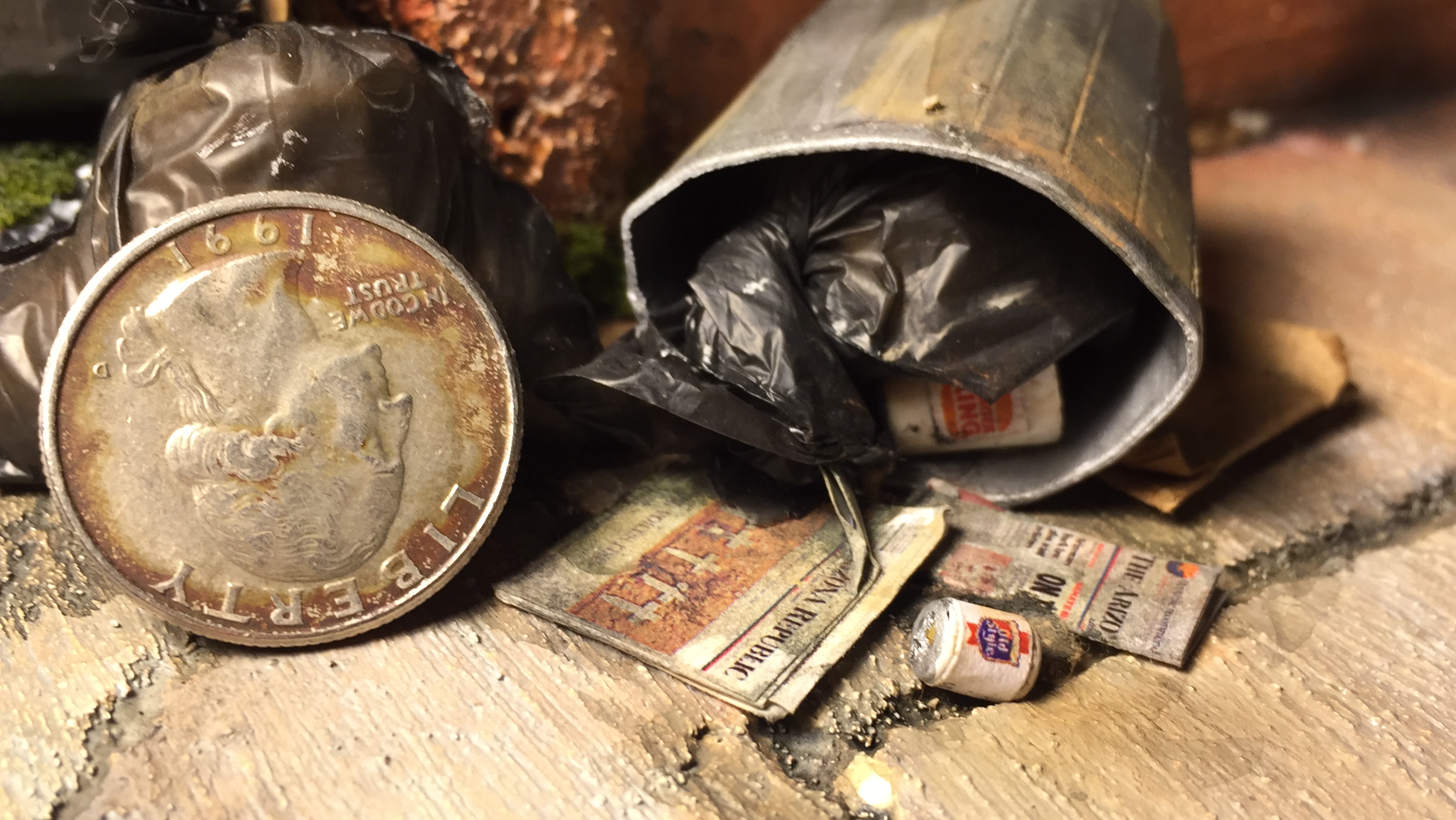 Favorite miniaturists you’d like to mention?
Favorite miniaturists you’d like to mention?
I really love the works of miniaturist Alan Wolfson, the amount of elaborate depth that he puts into his pieces is fantastic. I am inspired to create that amount of detail and depth every time I look at his work. I’m a big fan of Randy Hage as well. He is really one of the reasons I thought I wanted to give building miniature environments a try.
What is the most memorable miniature you have ever seen?
I’d say anything from Alan’s Subway series. I love how he creates the different views of street level and the subway level. No crack or bolt is left out.
I am inspired by everything around me. I pretty much am surrounded by art 24/7, so I like to think I have a bottomless well of inspiration, provided I don’t get in my own way!
What is your hope for the field of miniatures?
Since I’m the new kid in town, I’m not too sure how to answer this! All I know is I want to be a part of the miniature future! I would love to take this hobby and new found love and make a career of it someday.
What would you like to see replicated in miniature that you have not yet seen?
It would be really cool to see a miniature tree house; that has been on my to do list for a while.
Making miniatures was the first art I tried where I had no problem taking my sweet time. I love the challenge of not missing any detail.
New miniatures in the works?
I’m constantly cooking up something!
Since I’m so new to this, I want to try and complete a small body of work to try and get something in a gallery setting. I’ve never had any work in in a gallery before, that’s on my to do list too!
Motto you live by?
Produce, produce, produce. I constantly tell myself to be making something, whether a doodle or a miniature replica of a toilet.
I do a lot of drawing and hand drawn lettering, My 9-5er is as a Graphic Designer, so I’m constantly bouncing between fine art and design. The computer and I have a love hate relationship. I’d rather be picking paint and glue out of my fingernails over sitting behind a computer any day.
I collect loads of toys from the 80s and 90s, spend time with my fiancé, and watch Back to the Future entirely too often.
What do you want miniature enthusiasts to know about you?
I can’t wait to see and learn as much as I can on this great new mini adventure I’m starting!
Want to see what Ryan Monahan has created this week? Check out his Instagram account today! To see more of his work, head on over to his website.

